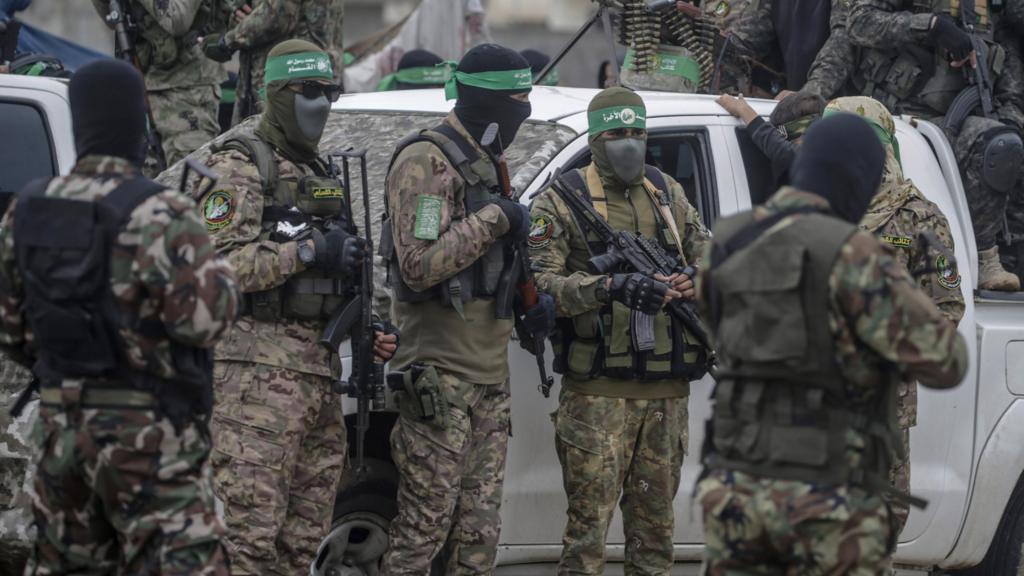After nearly two years of conflict, Hamas’s military strength is significantly diminished, and its political leadership faces substantial pressure.
Despite these challenges, Hamas has reportedly maintained a covert, cash-based system to disburse salaries to 30,000 civil servants, totaling $7 million (£5.3 million).
The BBC reports confirmation from three civil servants who stated they received approximately $300 each in the past week.
Sources suggest these individuals are among tens of thousands of employees who have consistently received a maximum of just over 20% of their pre-war salary every 10 weeks.
Amidst rampant inflation, these partial salaries – a fraction of their original value – are reportedly fueling discontent among Hamas supporters.
Severe food shortages, attributed by aid organizations to Israeli restrictions, and escalating rates of acute malnutrition persist in Gaza, where a kilogram of flour recently reached an unprecedented $80.
The absence of a functional banking system in Gaza renders salary acquisition complex and perilous. Israeli forces frequently target Hamas salary distributors in an effort to disrupt the group’s governance.
Employees, including police officers and tax officials, often receive encrypted instructions on their personal or their spouses’ phones, directing them to a specific location to “meet a friend for tea.”
At the designated meeting point, a man – or occasionally a woman – discreetly delivers a sealed envelope containing the money before departing without further interaction.
An employee of the Hamas Ministry of Religious Affairs, requesting anonymity for security reasons, described the dangers associated with wage collection.
“Each time I collect my salary, I bid farewell to my wife and children, knowing I might not return,” he stated. “Israeli strikes have struck salary distribution points on several occasions. I survived one such attack in a crowded Gaza City market.”
Alaa, whose name has been altered to protect his identity, is a schoolteacher employed by the Hamas-run government and the sole provider for his family of six.
“I received 1,000 shekels (approximately $300) in worn banknotes, unacceptable to traders. Only 200 shekels were usable; the rest are practically worthless,” he told the BBC.
“After two and a half months of starvation, they pay us in dilapidated currency.”
“I’m often compelled to visit aid distribution centers, hoping for flour to feed my children. Sometimes I manage to bring a little home, but most of the time, I fail.”
In March, the Israeli military reported the death of Ismail Barhoum, Hamas’s finance chief, in a strike on Nasser Hospital in Khan Younis, accusing him of funneling funds to the group’s military wing.
The means by which Hamas continues to finance salary payments, given the destruction of much of its administrative and financial infrastructure, remains unclear.
According to a senior Hamas employee familiar with the group’s financial operations, Hamas allegedly stockpiled approximately $700 million in cash and hundreds of millions of shekels in underground tunnels prior to the October 7, 2023, attack in southern Israel that triggered the Israeli military campaign.
These assets were reportedly overseen directly by Hamas leader Yahya Sinwar and his brother Mohammed, both of whom have since been killed by Israeli forces.
Historically, Hamas has relied on revenue from import duties and taxes imposed on the Gazan population, as well as financial support from Qatar.
The Qassam Brigades, Hamas’s military wing operating through a separate financial system, is primarily funded by Iran.
A senior official from the Egypt-based Muslim Brotherhood stated that roughly 10% of their budget was allocated to Hamas.
To generate revenue during the conflict, Hamas has continued to tax traders and sell cigarettes at inflated prices, sometimes exceeding 100 times their original cost. Before the war, a pack of 20 cigarettes cost $5; it now sells for over $170.
In addition to cash payments, Hamas has distributed food parcels to its members and their families through local emergency committees, the leadership of which is frequently rotated due to Israeli strikes.
This practice has fueled public anger, with many Gazan residents accusing Hamas of prioritizing aid distribution to its supporters, excluding the broader population.
Israel has accused Hamas of appropriating aid entering Gaza during the ceasefire earlier this year, an accusation Hamas denies. However, BBC sources in Gaza have reported that significant quantities of aid were seized by Hamas during this period.
Nisreen Khaled, a widow caring for three children after her husband’s death from cancer five years ago, told the BBC: “As hunger worsened, my children cried not only from pain but also from seeing our Hamas-affiliated neighbors receive food parcels and sacks of flour.”
“Are they not the reason for our suffering? Why didn’t they secure food, water, and medicine before launching their October 7th adventure?”
Takeover raises the prospect of curfews, evacuation orders and exhausted civilians on the road once more.
The plan faces fierce opposition within Israel as well as international criticism.
Prime Minister Benjamin Netanyahu’s office announced plans to take control of Gaza City on Thursday
The security cabinet approved the move, though critics say it could further endanger hostages and uproot many more Palestinians.
The Israeli PM’s proposals have provoked condemnation from the UK and the UN

